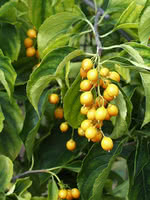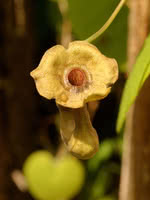Mon-Fri 9am - 5pm Mountain time
American Bittersweet vs Dutchmans pipe
Celastrus scandens
Aristolochia macrophylla
NOT AVAILABLE THIS SEASON - MIGHT RETURN
NOT AVAILABLE THIS SEASON - MIGHT RETURN
American Bittersweet is a deciduous, woody, perennial vine with striking orange to yellow berries that persist into winter. Indigenous to North America, this vine has become so rare it is now considered a protected species.
Excellent for naturalization projects, American Bittersweet attracts birds and other wildlife. Please keep in mind that the plant is toxic to humans and should not be ingested. To ensure the attractive berries are produced, cross-pollination between a male and female plant must occur.
The Dutchman’s Pipe is a fast growing, deciduous, woody, climbing vine. Featuring large heart-shaped leaves that overlap and often hide the flowers. The Dutchman’s Pipe namesake comes from the long yellow-green, brown or purple flowers that flare at the end, resembling Dutch smoking pipes.
The Dutchman’s Pipe will make a great screen or shade in your urban landscape, but does require support from a trellis or a fence. To control the growth, cut back in late winter.

